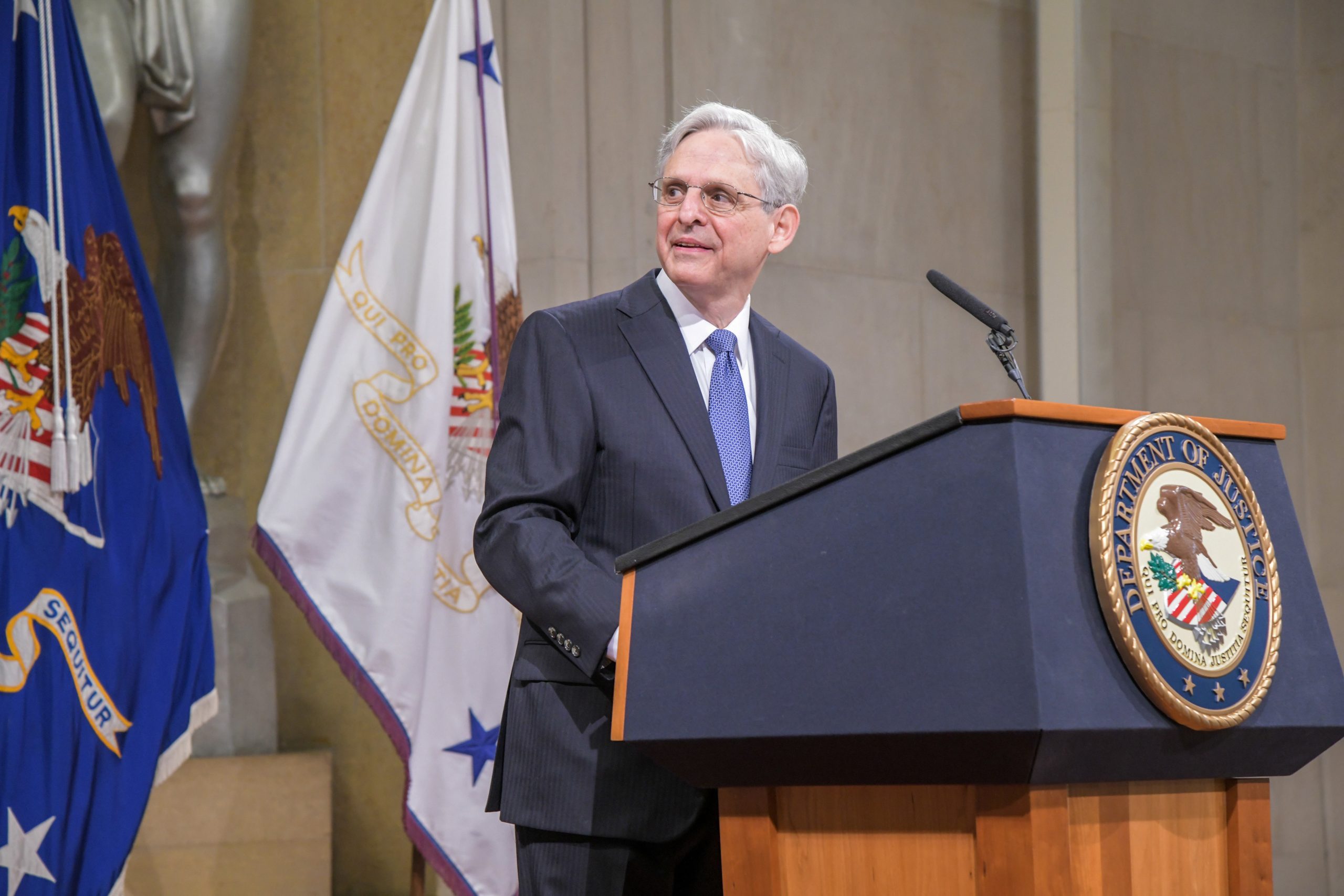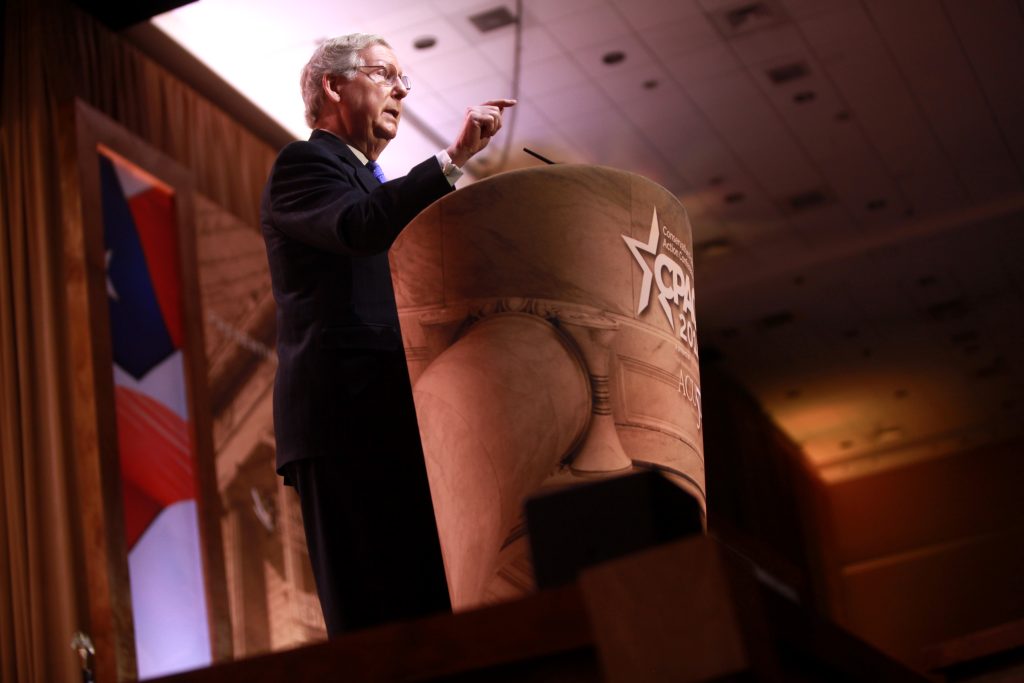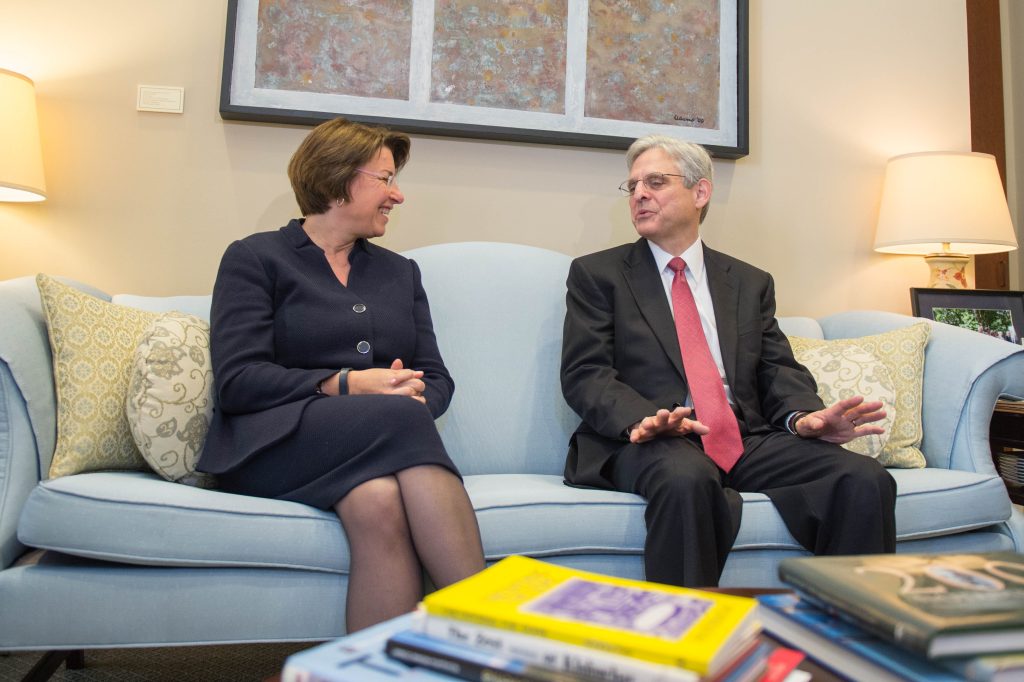
13 Mar The Subtly Radical Reforms of Merrick Garland
If we lived in a perfect world, Merrick Garland would be an Associate Justice of the Supreme Court. When Antonin Scalia passed away on Feb. 13, 2016, President Barack Obama exercised his powers under Article II, Section 2, of the Constitution to nominate Garland to fill the vacancy. However, Senate Majority Leader Mitch McConnell immediately declared the nomination null and void since this was a presidential election year. In conjuring a rule out of thin air, McConnell declared “the American people should have a say in the court’s discretion.”
This was so arbitrary and capricious that it made the infamous Tuck Rule in the 2002 AFC divisional playoff game look like a paragon of transparency. Moreover, McConnell ignored his own rule when President Donald Trump later nominated Amy Coney Barrett to fill the vacancy created when Ruth Bader Ginsburg died. This was truly one of the greatest examples of Congressional hypocrisy as Ginsburg died on Sept. 18, 2020, less than two months before the presidential election. This was much closer to the election than the Garland nomination. Yet, McConnell decided to ignore his own rule much like how the NFL ignored enforcing the Tuck Rule all the thousands of other times a quarterback had fumbled.
The December 16 Memoranda
However, fate sometimes plays an interesting role in life. President Joe Biden nominated Merrick Garland to become Attorney General after his inauguration. A slim majority in the Senate then approved Garland’s nomination. While McConnell may have blocked Garland from taking a seat on the Supreme Court, he may have inadvertently given Garland even more power as a result.
A strong argument can be made that Garland now has more power to shape criminal justice reform as the highest ranking law enforcement officer in the nation than he would have as one of nine Supreme Court justices. We are seeing this happen in real time. On Dec. 16, 2022, Garland issued a pair of memoranda to all federal prosecutors. These simple memoranda have radically reformed how all of the Assistant U.S. Attorneys are to handle criminal justice matters going forward. Let’s take a look at how the Dec. 16 memoranda will alter the criminal justice system, making it more equitable for federal defendants.

Determining Whether to Bring Federal Criminal Charges
The first of the two memoranda covers a number of different topics, including charging, plea deals and sentencing. When it comes to charging a possible defendant, the first memorandum radically departs from Garland’s predecessors in the Trump administration, William Barr and Jeff Sessions. The Trump Attorneys General instructed federal prosecutors to “charge and pursue the most serious, readily provable offense.”
Garland instructs prosecutors that if there is no federal interest in the prosecution or there are non-federal alternatives, then charges should not be pursued. For example, if the alleged crime relates to only a state interest and is being pursued by a state’s attorney or a district attorney, then federal charges should not be pursued. This would end also end the practice of charge-stacking.
In addition, if there is an adequate non-criminal alternative to prosecution, then federal prosecution isn’t warrant. For example, if the SEC is pursuing a civil remedy that will adequately compensate the victims of a securities fraud, while creating diversion to any future violations by the alleged perpetrator. If this is actually followed by the DOJ, it could lead to an end of the piling on phenomena experienced by many federal defendants.
An End to Coercive Indictments
The next instruction may be one of the most radical yet. First, Garland admonishes federal prosecutors not to be influenced by a “person’s race, religion, gender, ethnicity, national origin, or sexual orientation; or political association, activities, or beliefs.” These are all protected classes of people by operation of constitutional law. In addition, prosecutors cannot be guided by personal feelings or their own self-interest. This would seem to be a reaction to complaints that there are too many federal prosecutors looking to make a name for themselves.
Garland also states that “[c]harges may not be filed, nor the option of filing charges raised, simply to exert leverage to induce a plea.” It is not clear if Garland is talking about people being threatened with prosecution themselves. In this practice, prosecutors threaten to pursue additional charges if an individual does not plead guilty. He also could be referring to the common practice of threatening indictments against friends and relatives to coerce a plea. Critics of the DOJ have long cited these practices as going against the interest of justice. Either way, these coercive practices are now effectively being ended by Garland’s work.
Proportionality in Choosing Charges and Sentences
Another major criticism of federal prosecutors has been that they charge defendants with the maximum level of crimes. This was certainly the case under Trump. Further, federal prosecutors have also almost always requested the maximum sentences. This means that they look for the top end of a sentencing guideline. In addition, they often request upward departures from the guidelines formula. The only time they request a downward departure is with a cooperating defendant. Otherwise, federal prosecutors have always looked to super-size the charges and the sentences. Garland’s first memorandum should end this practice.
Garland instructs federal prosecutors to take proportionality into consideration. In other words, the charges and the sentence should be proportional to the defendant’s conduct. This is something that the DOJ had been moving away from, especially with respect to charges that carry a mandatory-minimum sentence. This resulted in relatively low level participants in a crime or fraud getting hammered with long prison sentences. Now, prosecutors have been advised to move away from charging crimes with mandatory minimums. Garland has also instructed prosecutors to consider downward departures if the sentencing guidelines would impose a particularly harsh sentence.

An End to Coercive Plea Deals
According to the Pew Research Center, more than 90% of federal defendants plead guilty rather than go to trial. While 8% were fortunate to have their charges dismissed, the remaining 2% who decided to go to trial were convicted. Only 320 criminal defendants who went to trial in 2018 were acquitted. With those numbers, it is not surprising that so many defendants choose to plead guilty. Garland has made note of this and instructed federal prosecutors to not use the threat of additional charges to coerce a plea. Hopefully, this will lead to more defendants exercising their constitutional right to a trial as it should lessen the trial penalty. It should also allow defendants to have more leverage in negotiating a plea deal that is more proportional to the defendant’s actual conduct.
The Disparity in Sentencing for Crack and Powder Cocaine
The Anti-Drug Abuse Act of 1986 created a five-year mandatory minimum sentence for possession of five grams of crack cocaine. Meanwhile, an individual would have to possess 500 grams of powder cocaine in order to trigger the five-year mandatory minimum. The result has been a disproportionate number BIPOC people in federal prisons. Crack is more common in that population than powder cocaine, which is more common in white, affluent communities. Science does not support his distinction. Nevertheless Congress put them in place to address the hysteria surrounding crack. The Fair Sentencing Act of 2010 changed the proportion to 18:1, but this is still leading to a disparate impact on poor and minority populations.
While Congress has dithered over the EQUAL Act, which would eliminate the distinction and the mandatory minimum altogether, Garland has taken matters into his own hands. In his second memorandum, he instructs his federal prosecutors to steer clear of charges with mandatory minimums in drug cases. This also applies to plea deals and sentencing: “For example, a prosecutor could ask the grand jury to supersede the indictment with charges that do not carry mandatory minimum sentences; a defendant could plead guilty to a lesser included offense that does not carry the mandatory minimum; or a defendant could waive indictment and plead guilty an information that does not charge the quantity necessary to trigger the mandatory minimum.”
A Brighter Future Tempered by a Political Reality
Hopefully, the federal prosecutors across the country will take note of Merrick Garland’s two memoranda. If so, we could see a number of positive developments. First, we will probably see a reduction in the racial and economic disparity seen in federal drug prosecutions and incarcerations. Second, we could see an end to the practice of threatening charges in order to coerce plea deals. Finally, we may see a federal criminal justice system that seems less arbitrary and capricious.
This hope for a brighter future does have a limitation. There is the chance that a number of AUSAs around the nation may choose to ignore the guidelines set forth by Garland. Bureaucratic pushback is always an issue with the federal government. This may be the case in so-called “red” states.
In addition, the next Attorney General could supersede the reforms contained in Garland’s memoranda. Just as Garland ended a number of practices adopted under Barr, so could a Republican Attorney General go back on the reforms enacted by Garland. Still, these radical reforms created by Garland are a step in the right direction.

